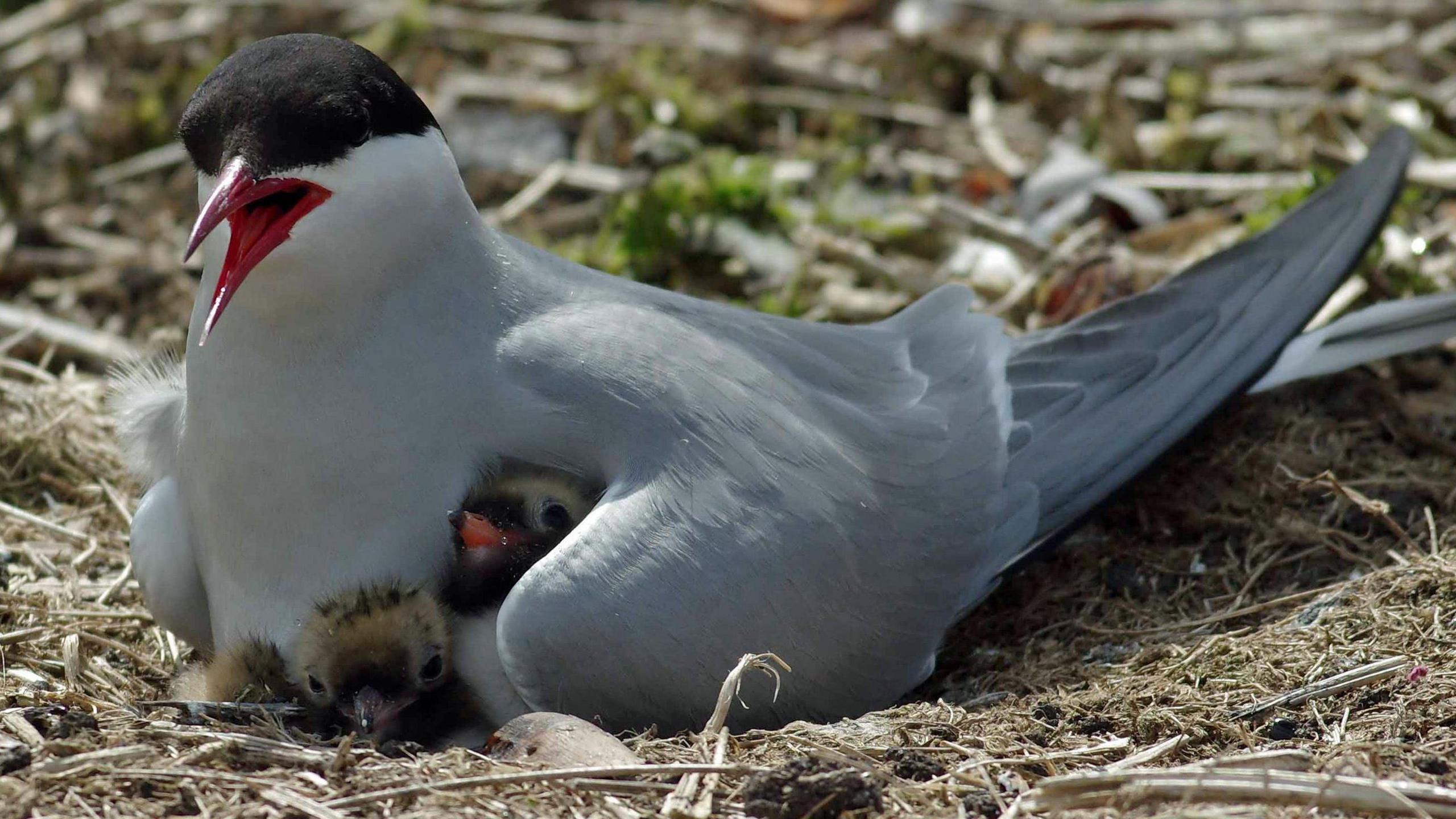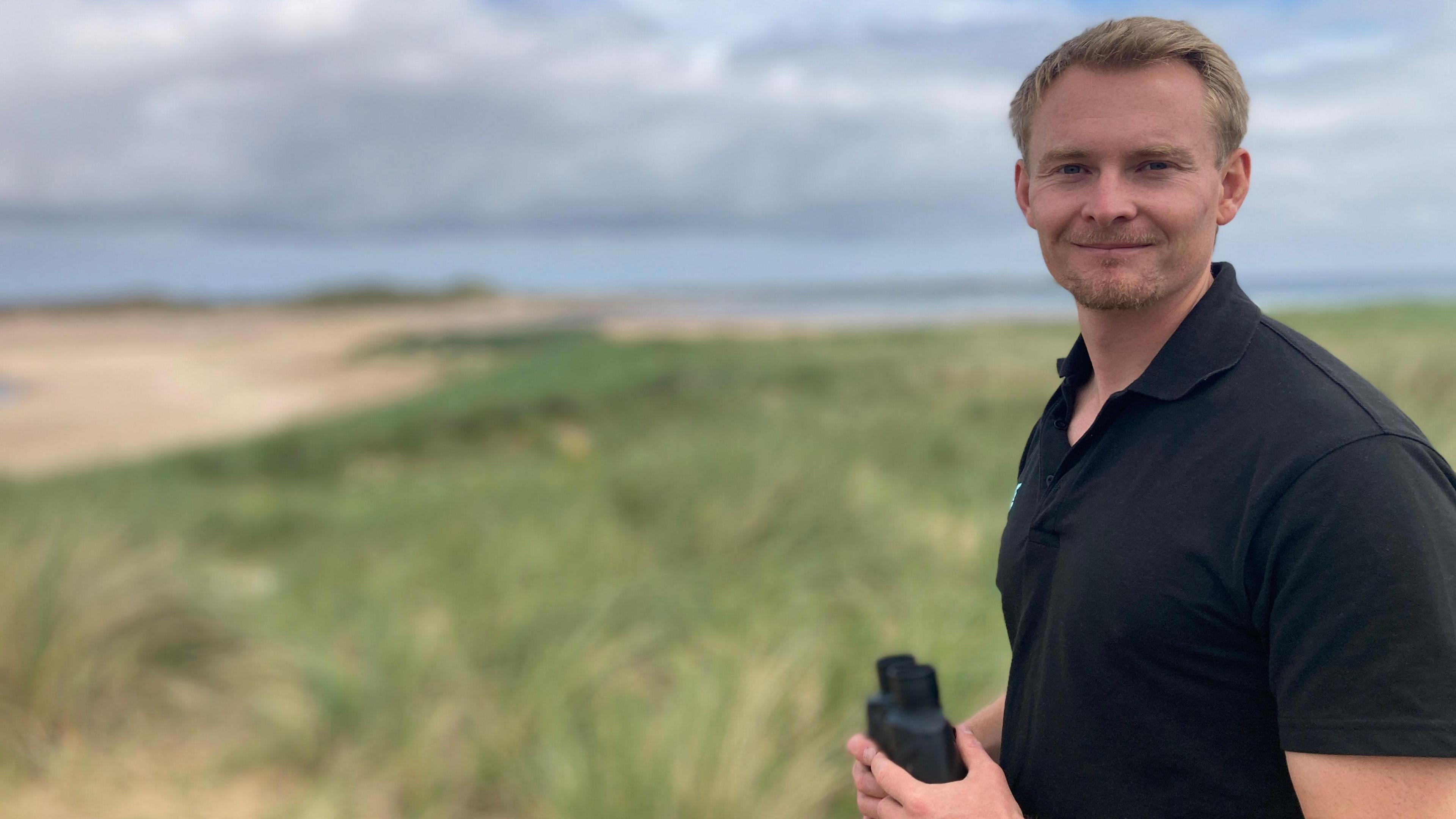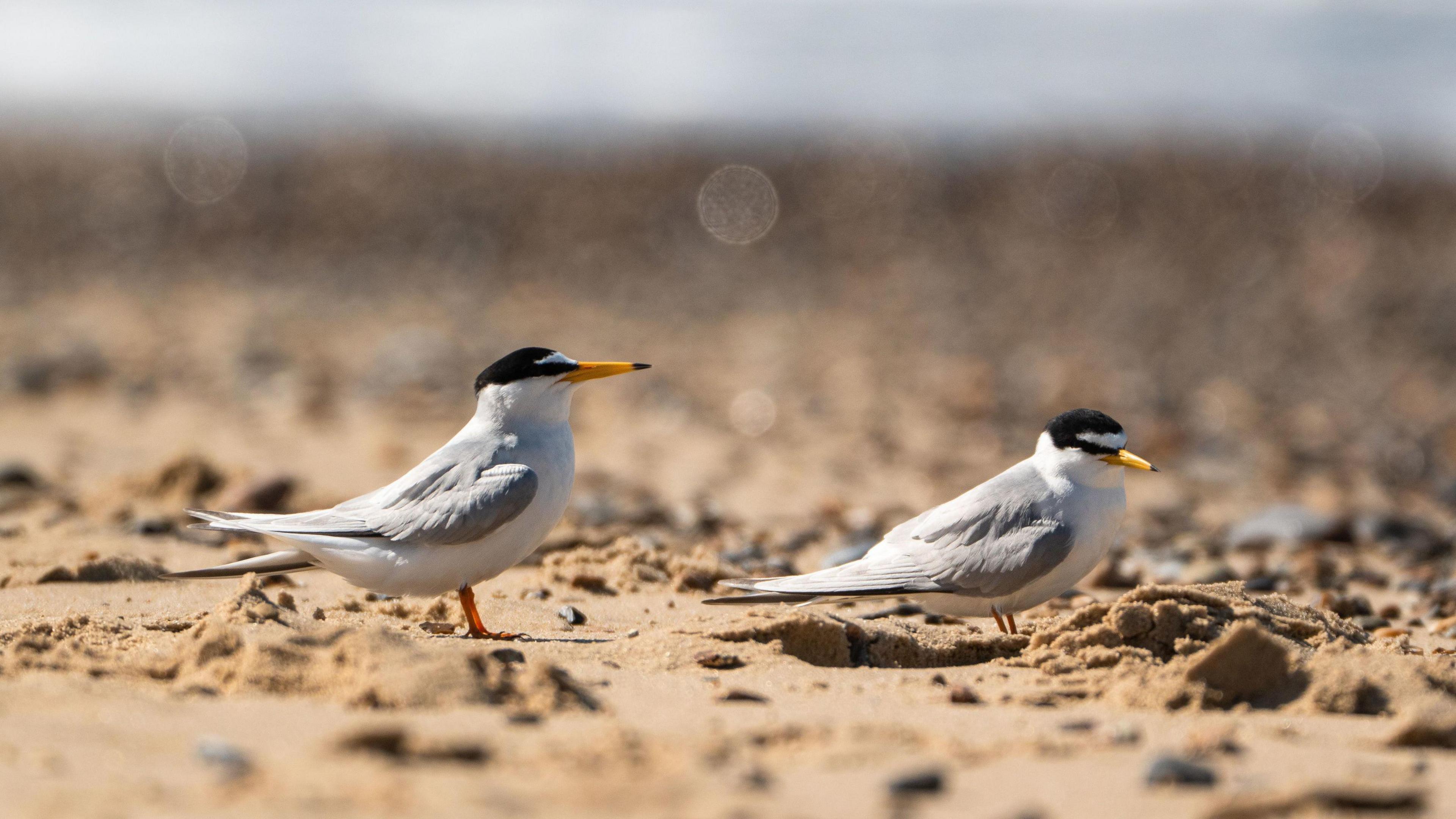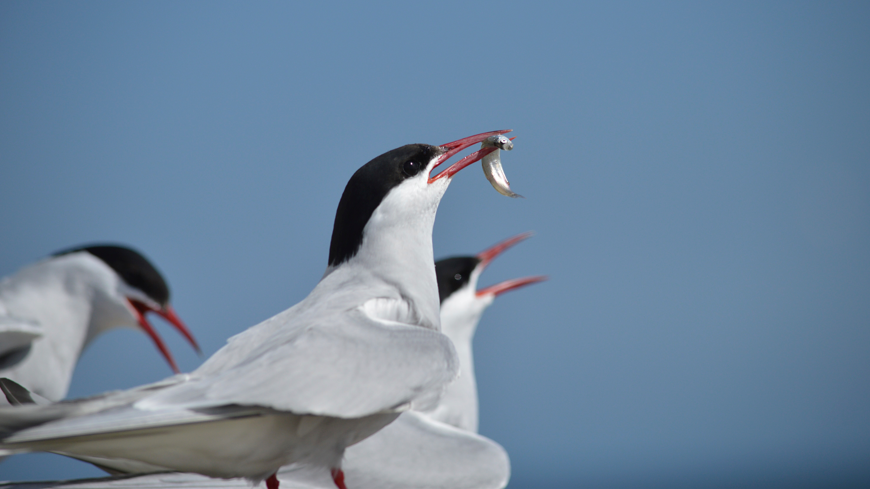Seabird colonies decreasing at coastal site

Some of the UK's rarest seabirds, including Arctic terns, nest at Long Nanny, near Beadnell, Northumberland
- Published
The National Trust says a fall in the number of seabirds at an important coastal breeding site is a "cause for concern".
Long Nanny, near Beadnell, Northumberland, has the largest mainland population of Arctic terns in the UK.
But a census conducted by National Trust rangers showed the number of breeding pairs at the site had dropped from 1,037 last year to 724 this year – a decline of about 30%.
Lead ranger James Porteus says the exact cause of the fall is still being explored but the impact of climate change, avian flu and over-fishing were potential causes.
The number of little terns at the site has also fallen.
Mr Porteus said both Arctic and little terns had seen their nests lost to flooding after high spring tides.
He said Northumberland had "internationally important seabird colonies" and it was "really important we look after them".

Lead ranger James Porteus says the exact cause of the fall is still being explored
"We work really hard throughout the breeding season to make sure the habitat and the beach here is suitable for them to breed, that there's no disturbance from any recreational activities and also to make sure predation is kept to a minimum."
Last year, Arctic terns were added to the UK Birds of Conservation Concern Red List after evidence of population declines in other parts of the country.
Arctic terns are believed to have one of the longest migrations of any bird, flying from Northumberland, and other northerly nesting spots, to the Antarctic and back every year.

Little terns are an amber list species
Birdwatchers visiting the Long Nanny site said it was vital the bird colony was protected.
Bill Terrance, a retired factory manager from Kilmarnock, said terns were "fascinating" to observe.
"The way they fly and feed their young. I think it's really compulsive viewing for us."
Follow BBC North East on X, external, Facebook, external, Nextdoor and Instagram, external.
Get in touch
Do you have a story suggestion for BBC Tyne?
Related topics
- Published3 September 2024
